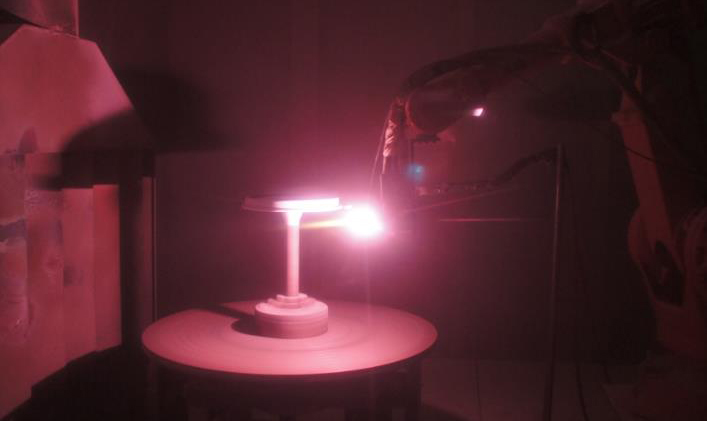In the past ten years, researchers have used PVD (including magnetron sputtering, ion beam sputtering, radio frequency discharge ion plating, plasma plating, EB-PVD, etc.) to prepare nano-monolayer films and nano-multilayer films, and obtained nano-Ti ( N, C, CN), (V, Al, Ti, Nb, Cr) N, SiC,,,, TiN/CrN, TiN/A1N, WC-Co coatings for corrosion resistance of wear-resistant aircraft shaft components; plasma Spraying nano-coatings has been used to seal the air path of aero-engines; nano-coatings have been used for thermal protection of turbine blades; adding graphene and carbon nanotube composite coatings have radar stealth functions. When we use atmospheric pressure plasma spraying technology to prepare silicon silicide coatings on pure titanium substrates, atmospheric pressure plasma spraying has the advantages of time-saving and large-area manufacturing compared to traditional manufacturing processes.
However, silicon carbide is easily decomposed by itself at high temperature, so that the thickness and strength of the coating are not high. Therefore, three methods are proposed to solve this problem. The first is the "sol-gel method", which uses "tetraethoxysilane, TEOS" as a precursor to grow a silica protective layer on the outer layer of silicon carbide powder, and then heat and spray; the second method is The sol-gel method is adopted, but "sodium dodecyl sulfate, SD" is added as a surfactant to make the silica layer grow more densely; the third is to add alumina to adjust the ratio of silicon carbide to alumina.

However, there are two types of thermal spraying processes, namely "plasma spraying" and "arc spraying", and their applications are not the same. For plasma spraying, the sprayed materials are alumina and yttrium oxide coatings, which are mainly used for to resist the damage of the cavity caused by the bombardment of the plasma.
Another arc spraying process is to spray pure aluminum wire, so that the inner surface of the cavity has high roughness, and the charged particles inside the cavity are captured by the effect of tip discharge to prevent these particles from affecting the yield. Common coatings in the aerospace industry include high temperature resistant thermal barrier coatings, abradable coatings, high temperature resistant metal coatings (T400, T800), and wear-resistant coatings. Among them, the thermal barrier coating is mainly composed of two coatings, namely "bond coating" and "top coating", and the thermal spraying process used by these two coatings is also different. In terms of bonding layer, the current common processes are "low pressure plasma spraying, low pressure plasma spraying, LPPS", "high pressure high velocity flame, high velocity oxygen fuel, HVOF, HVAF".
The material used in the bonding layer is MCrAlY (M=Ni, Co, NiCo, CoNi), which has good affinity with the top layer material. In the process of the top layer, the current mainstream is the use of "atmosphere plasma spraying, APS". In recent years, a considerable number of domestic and foreign scientific research units and manufacturers have used atmospheric plasma slurry plasma spraying to make the top layer. The material used for the top layer is yttria stabilized zirconia (8YSZ), which is characterized by low thermal conductivity and is relatively cheap compared to other thermal insulation materials. Various applications such as blade rings, combustion barrels, sealing rings, aircraft landing gear, etc. Therefore, we recommend replacing the plasma spraying method with the PEO method, because the PEO film layer is formed by the atomic bonding of the object itself, so the adhesion is particularly strong, which is stronger than the general external coating method (such as: plasma spraying). too much. In addition, PEO treated aluminum parts are more durable and less prone to corrosion than conventional hardened, heat treated, chrome plated, anodized, ceramic sprayed or nitrided.
Note: This article is reproduced from the online platform. If there is any infringement, please contact the website staff to delete it.
